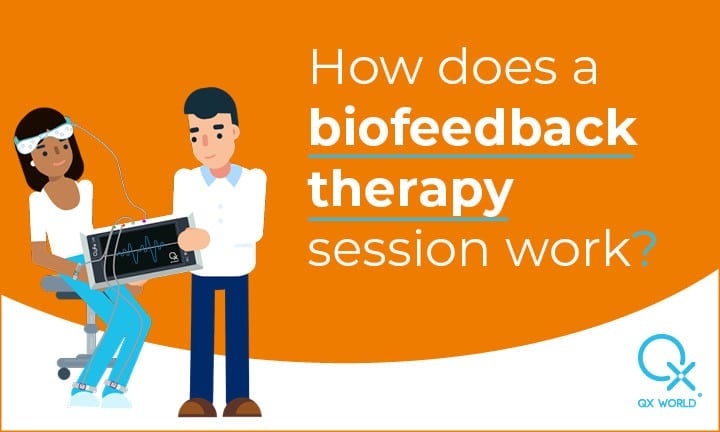
Biofeedbacktherapie may sound complex but rest assured: anyone can do it. Even small children can successfully complete the program as long as they are willing to. Not quite sure what to expect from a biofeedback therapy session? Then this article, explaining all the different steps, is a must-read for you.
The first step of any biofeedback therapy program is creating a lifestyle inventory, based on simple questions about your lifestyle. Do you drink enough water? Do you exercise? How much alcohol do you drink? Do you smoke? Have you had surgery? And so forth. The answers to these questions give the therapist an overall idea of your SOCs (suppressions and obstructions to cure).
Next, the therapist starts the calibration process. Body harnesses or electrodes, hooked to a biofeedback device, are placed on your skin – no worries, it’s perfectly painless. A very subtle electrical signal, so gentle most people don’t even feel it, is then sent through your body to measure your body electric and to make sure the device has the correct settings for you.
Once the therapist has tuned the device to your body electric, the same gentle electrical current is sent through your body for about three minutes to create an inventory of symptoms. While you sit back and relax, the biofeedback device measures how your body responds to over 15,000 indicators. Like a virus scan on a computer, the quantum biofeedback device spots abnormalities in the body including (but certainly not limited to) vitamin deficiencies, bad nutrient levels, brain waves that point to stress, inflammation, allergies and addiction.
The fourth step is when the actual therapy starts. While you’re still hooked to the biofeedback-apparaat, the therapist has it run a specific software program. Depending on your symptoms, the program monitors your brain waves, heart rate, breathing, skin temperature or muscle tension. The information gathered is fed back to you – hence the term ‘biofeedback’ – on a monitor or, in some cases, through sound or light.
With the program running and you continuing to observe the measurements, the biofeedback therapist teaches you to make deliberate changes in your body* and, by doing so, change the measurements at will. Most biofeedback therapy sessions take between thirty and ninety minutes.
*In the case of kwantum biofeedback therapy, an advanced type of biofeedback, the devices sets out to fix your body electric by sending electrical pulses to the onbewust parts of the brain. All you have to do is relax while the quantum biofeedback device and software re-educate the cells that are out of balance.
At the end of the session there is a debriefing in the form of a report telling you what to do to improve your health. More specifically, you will receive lifestyle suggestions, such as cutting down on sugar or switching to a plant-based diet. By adopting the lifestyle that works best for you, you will help your body realize its maximum health potential and therefore get the most out of the biofeedback therapy.
Naturally, biofeedback therapy takes practice and determination, but you will find that the ability to adjust your efforts while watching the results on a monitor in real-time makes it very feasible. With quantum biofeedback, the device even does most of the work for you. Ultimately, you will be able to master the technique all on your own, no longer needing the therapist or the feedback device. When it comes to both traditional and quantum biofeedback, the desired results tend to be achieved between fifteen and thirty sessions.
+1 (989) 681-1063
+1 (856) 322-8589